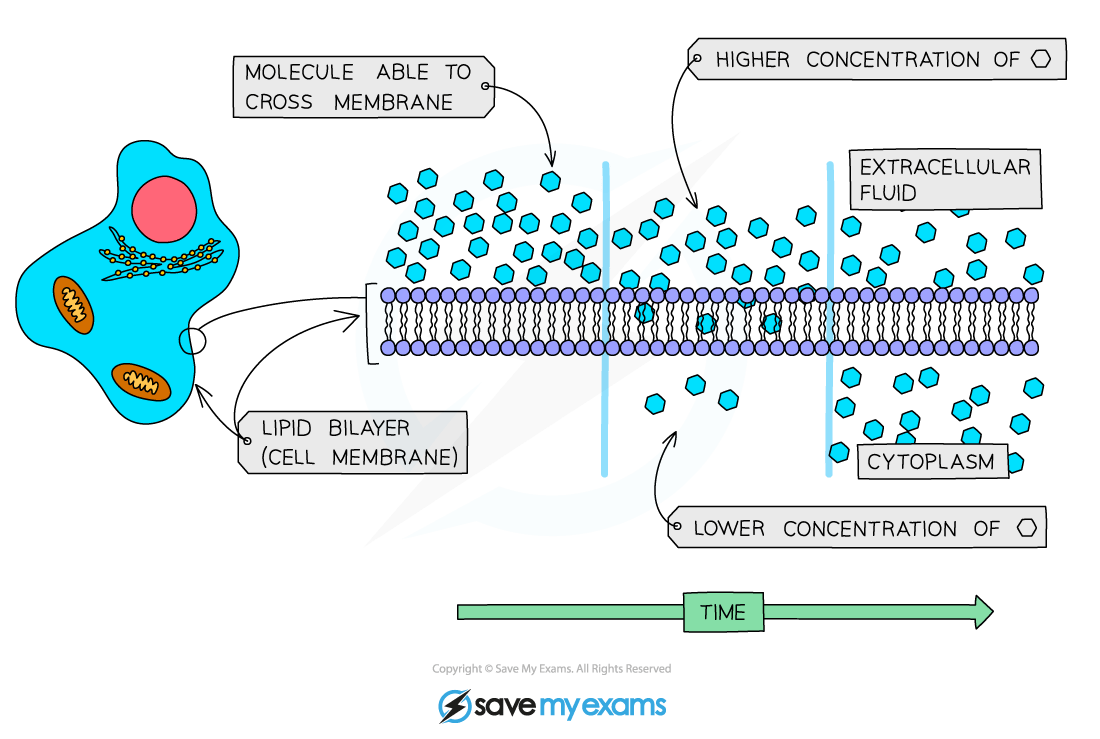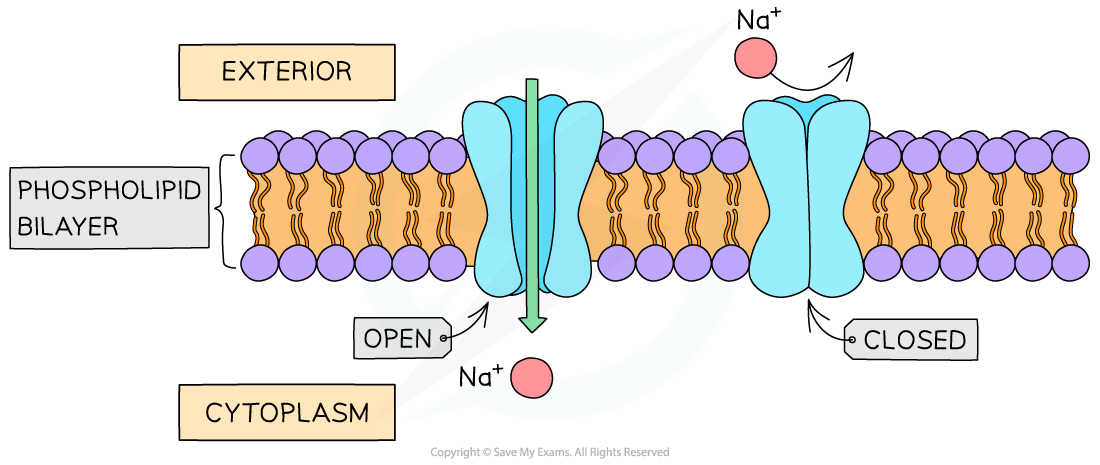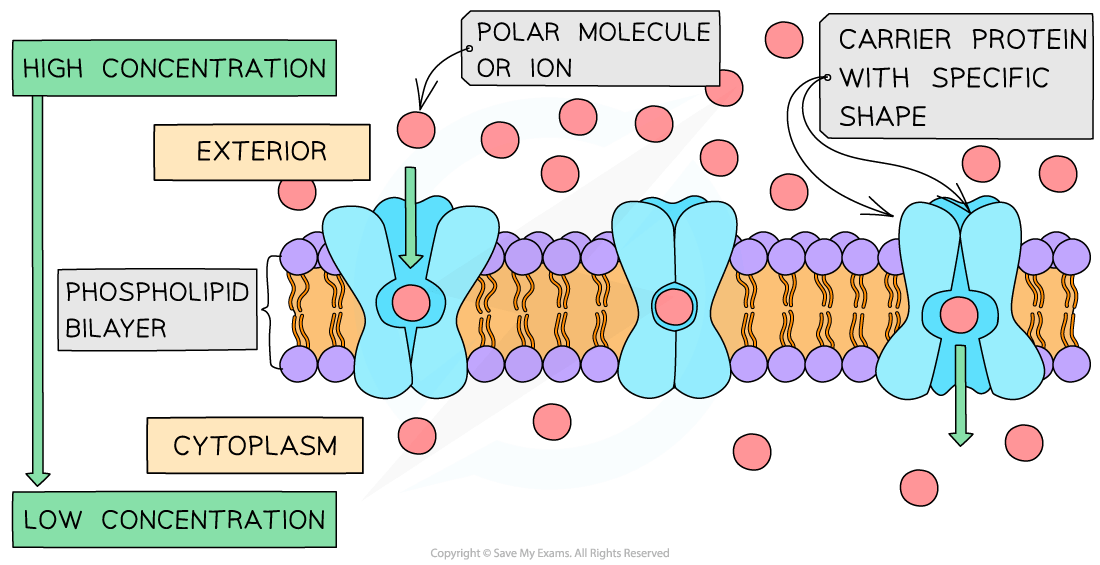Diffusion (Cambridge (CIE) A Level Biology): Revision Note
Exam code: 9700
Diffusion & facilitated diffusion
Diffusion is a type of transportation
It can be defined as:
The net movement of a substance from a region of its higher concentration to a region of its lower concentration, as a result of the random motion of its molecules or ions
The molecules or ions move down a concentration gradient
The random movement is caused by the natural kinetic energy of the molecules or ions

As a result of diffusion, molecules or ions tend to reach an equilibrium situation (given sufficient time), where they are evenly spread within a given volume of space
The rate at which a substance diffuses across a membrane depends on several factors:
Factor | How the factor affects the rate of diffusion |
|---|---|
'Steepness' of the concentration gradient | This is the difference in the concentrations of the substance on both sides of the surface If there are more molecules on one side of a membrane than on the other, at any one moment more molecules will move randomly across the membrane from that side than from the other side A greater difference in concentration means a greater difference in the number of molecules passing in the two directions within a given time, and therefore a faster rate of diffusion |
Temperature | Molecules and ions have more kinetic energy at higher temperatures They move faster, resulting in a higher rate of diffusion |
Surface area | The greater the surface area across which diffusion is taking place, the greater number of molecules or ions that can cross it at any one moment and therefore, faster diffusion occurs The surface area of cell membranes can be increased by folding (eg. microvilli in an intestinal epithelium cell or cristae in a mitochondrion) As a cell increases in size, the surface area to volume ratio decreases, which slows down the rate that substances can diffuse through a cell as the distance required to move becomes too great |
Properties of molecules or ions | Large molecules diffuse more slowly than smaller ones as they require more energy to move Uncharged and non-polar molecules diffuse directly across the phospholipid bilayer Non-polar molecules diffuse more quickly than polar ones because they are soluble in the non-polar central layer of the phospholipid bilayer |
Facilitated diffusion
Certain substances cannot diffuse through the phospholipid bilayer of cell membranes. These include:
Large polar molecules such as glucose and amino acids
Ions such as sodium ions (Na+) and chloride ions (Cl-)
Because most substances in biology are water-soluble, facilitated diffusion is required by a large majority of molecules that diffuse across membranes
These substances can only cross the phospholipid bilayer with the help of certain proteins
This form of diffusion is known as facilitated diffusion
There are two types of proteins that enable facilitated diffusion:
Channel proteins
Carrier proteins
Channel and carrier proteins are highly specific (they only allow one type of molecule or ion to pass through)
Channel proteins
Channel proteins are water-filled pores
They allow charged substances (ions) to diffuse through the cell membrane
The diffusion of these ions does not occur freely, most channel proteins are ‘gated’
This means that part of the channel protein on the inside surface of the membrane can move in order to close or open the pore
This allows the channel protein to control the exchange of ions

Carrier proteins
Unlike channel proteins which have a fixed shape, carrier proteins can switch between two shapes
This causes the binding site of the carrier protein to be open to one side of the membrane first, and then open to the other side of the membrane when the carrier protein switches shape
The direction of movement of molecules diffusing across the membrane depends on their relative concentrations on each side of the membrane
Net diffusion of molecules or ions into or out of a cell will occur down a concentration gradient (from an area containing many of that specific molecule to an area containing less of that molecule)

Examiner Tips and Tricks
Remember – the movement of molecules from high concentration to low concentration is diffusion.
If this movement requires the aid of a protein (for example because the molecule is charged and cannot pass directly through the phospholipid bilayer) this is facilitated diffusion.

Unlock more, it's free!
Did this page help you?